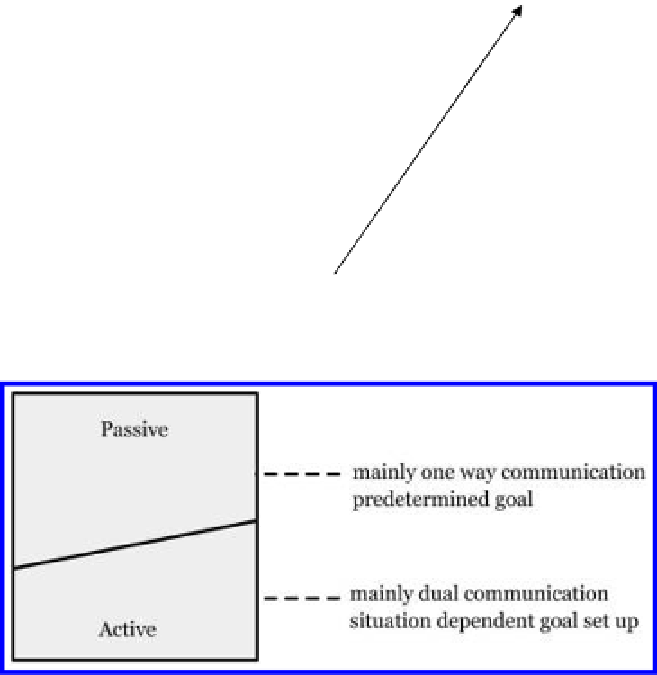Biomedical Engineering Reference
In-Depth Information
time
information is communicated t+4
decision is made t+3
processing data t+2
collecting sensor data
t+1
initialising a measurement t
Figure 5.6.
The time flow of a measurement cycle, showing the different time slots needed
to secure the required procedure for each section.
Figure 5.7.
The perceptual model approach showing the active/passive approach.
tive. The outcome of the system's expectation in performance and guidelines is
different depending on whether an individual needs complementing information
when participating in a sports activity, than when the person requiring guidelines
when crossing a dense traffic road.
The artificial perceptual process can be described as a general approach, where
one or a number of sensors makes spot measurements in the environment, often
at a distance away from the user of the received information. The time related col-
lected data is often local that provides a single spot of data. Many single spot data
are built together into a “global perceptual picture”, that provide an information
chart of the required information. An important aspect of the system performance
is the communication of information to the user both from the global and local
point of view concerning content and time. This aspect is of critical importance
when estimating a “real time” measurement process. This is illustrated in Fig. 5.6
and indicates the significance in time relations between the individual sensor data.
When focussing on the advantages of the complete process of human
supported sensor systems, then there is a need for extended efficiency in the tech-
niques for interfacing of the different sections in a measurement cycle. The effi-
ciency has been built upon the assumption that the best effort is made to minimise








Search WWH ::

Custom Search